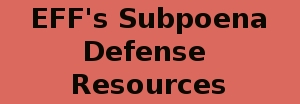Some companies have already expressed concern that 3D printing will allow consumers to repair so much of the product with at-home printed pieces, that the consumer is actually replacing the whole product for free. Unfortunately, the difference between making major repairs and reproducing the product is not clear-cut.
Patent: It is easy to imagine buying a product, scanning all its individual unpatented parts, and then using a 3D printer to print out any parts needed to repair a product at home. Not only would this be convenient for the consumer, but it would also prolong the life of the product. Keep in mind though, that what is and what isn’t patented isn’t intuitive. Some parts that you might assume are not subject to patent protection may actually be patented.
However, many useful objects do have patent protection. Under patent law, the creator has the exclusive right to reproduce a product. However, the consumer is generally allowed to make repairs to their product but they are not allowed to recreate the patented object. The questions remains, “at what point does a single major repair or cumulative repairs equate to reproducing the product?” Unfortunately, the answer for the moment is unclear.
Copyright: If the product were copyrighted, reproducing it would be a copyright violation. However, making repairs to a copy you obtained lawfully is not. Let’s say a person purchased an art piece made of various colored sugar cubes that combined to create an image of a man’s face. Individually, the sugar cubes are not copyrighted. If a dog eats some, but not all of the sugar cubes, how many could be replaced before the owner has effectively reproduced the artist’s work without permission? The answer is unfortunately unclear.
Trademark: So long as consumers are never exposed to a reproduction of a trademark, a trademark can be copied. For example, if a person broke the lid on a standard thermos that has a Starbucks logo on it. They could replace the lid and the whole logo, so long as the lid is kept strictly for personal use.
If you have any other questions regarding 3D printing and the law please don’t hesitate to contact New Media Rights via our contact form.









